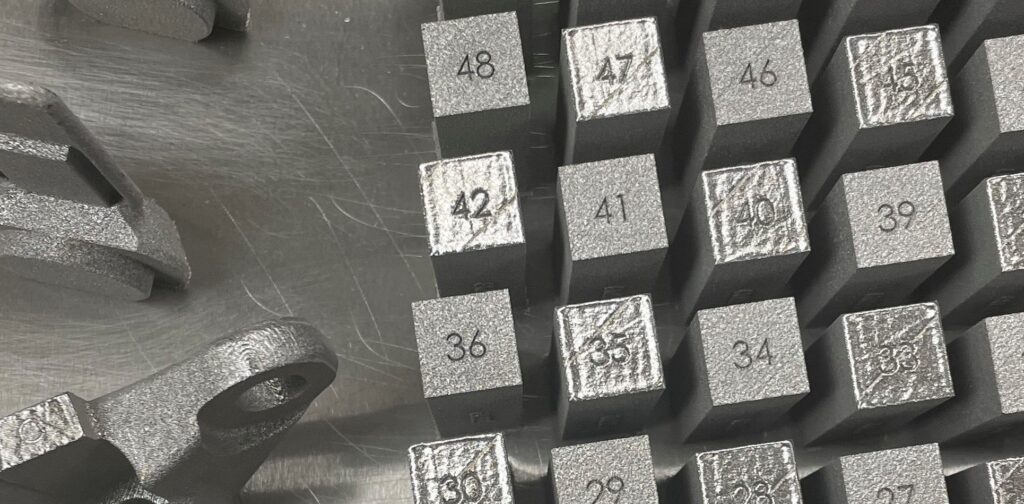Senvol, an NYC-based database management company specializing in additive manufacturing (AM) software solutions, announced that it has successfully delivered on one of the major objectives of a US Army contract it was awarded in November, 2020. The contract, awarded by the Army Research Laboratory (ARL), is for the use of the company’s machine learning software, Senvol ML, to rapidly qualify and design the properties of additive manufacturing (AM) materials.
R&D nonprofit National Center for Manufacturing Sciences (NCMS) administered the contract, as part of the ARL’s Advanced Manufacturing, Materials, and Processes (AMMP) program. Specifically, Senvol successfully demonstrated that Senvol ML can effectively “develop statistically substantiated material properties analogous to material allowables”, in this case for 17-4 PH Stainless Steel on a powder bed fusion (PBF) platform.
What that means is that while Senvol ML did not develop “true allowables” — formally certified properties like “Allowable Stress” for a given material — it did achieve results that suggest the software will be able to do that with further development. As the company notes, achieving the allowables was prevented largely by budget constraints. I’m only speculating, but it could be that the company showed its results via simulations, and further funding could then allow it to test the validity of those same results in things like war game exercises and technology demonstrators.

In the press release about the successful use of Senvol ML in material allowables development, Senvol president Annie Wang commented, “Material allowables development is a very expensive and time-consuming endeavor. Senvol’s program was very successful in demonstrating a new approach to [AM] allowables development that leverages machine learning. We were very pleased with the results and look forward to continued work in this cutting edge area.”
Hector Sandoval, a Lockheed Martin Fellow who reviewed the AMMP program test results, commented, “I have experience developing material allowables using traditional methodologies. The current process works well, but there are some limitations. It was exciting to support the AMMP program by reviewing the technical approach, test results, and final presentation. It was great to get a first-hand look at the potential of leveraging a machine learning based approach to help establish material allowables.”

The pace of progress on metals qualification for AM is a pretty good measure of the pace of progress in the sector, in general. Relevant to that, in addition to the projects like the Senvol ML one that are concluding and have the potential to be leveraged into larger scale contracts, a high proportion of the total value of US military contracts related to AM this year have been related to things like digitalized parts inventories.
For one thing, that shows that the infrastructure is already being put into place to support the scale-up of contracts that have been proven successful at the basic research phase. For another, since the US military has taken responsibility for AM metals qualification into its hands, the pace of progress in AM metals qualification will likely proceed according to DoD manufacturing readiness level (MRL) timelines. The potential of machine learning to speed that process up, in particular, gives the military quite a tangible strategic objective for rapidly accelerating its moves to take direct control over the nation’s AI infrastructure. And, even if any other organization claims to have the legitimacy to do that — to regulate the use of AI in certifying metals used in manufacturing — only the US military has the metals purchasing-power to allow it to force everyone else to fall in line with its certification requirements.
This, in turn, could certainly reciprocally speed up the use of machine learning in materials qualification. For the broader AM sector, then, the general process of metals qualification can be expected to happen much more quickly than if it were just allowed to unfold organically, without direct government intervention. The quantities of metal that will be required to support the accelerated AM metals qualification push suggest a much faster than anticipated scale-up of hardware production across the industry as a whole, as the scale-up of the largest and most expensive machines — the ones with the most parts — should in the long run be a big factor in driving down parts costs for hardware of all forms. Of course, for this to happen, all the various AI-driven software platforms under development will ultimately have to be effective at speeding up and cheapening the process.
Subscribe to Our Email Newsletter
Stay up-to-date on all the latest news from the 3D printing industry and receive information and offers from third party vendors.
Print Services
Upload your 3D Models and get them printed quickly and efficiently.
You May Also Like
Reinventing Reindustrialization: Why NAVWAR Project Manager Spencer Koroly Invented a Made-in-America 3D Printer
It has become virtually impossible to regularly follow additive manufacturing (AM) industry news and not stumble across the term “defense industrial base” (DIB), a concept encompassing all the many diverse...
Inside The Barnes Global Advisors’ Vision for a Stronger AM Ecosystem
As additive manufacturing (AM) continues to revolutionize the industrial landscape, Pittsburgh-based consultancy The Barnes Global Advisors (TBGA) is helping shape what that future looks like. As the largest independent AM...
Ruggedized: How USMC Innovation Officer Matt Pine Navigates 3D Printing in the Military
Disclaimer: Matt Pine’s views are not the views of the Department of Defense nor the U.S. Marine Corps Throughout this decade thus far, the military’s adoption of additive manufacturing (AM)...
U.S. Congress Calls Out 3D Printing in Proposal for Commercial Reserve Manufacturing Network
Last week, the U.S. House of Representatives’ Appropriations Committee moved the FY 2026 defense bill forward to the House floor. Included in the legislation is a $131 million proposal for...

































